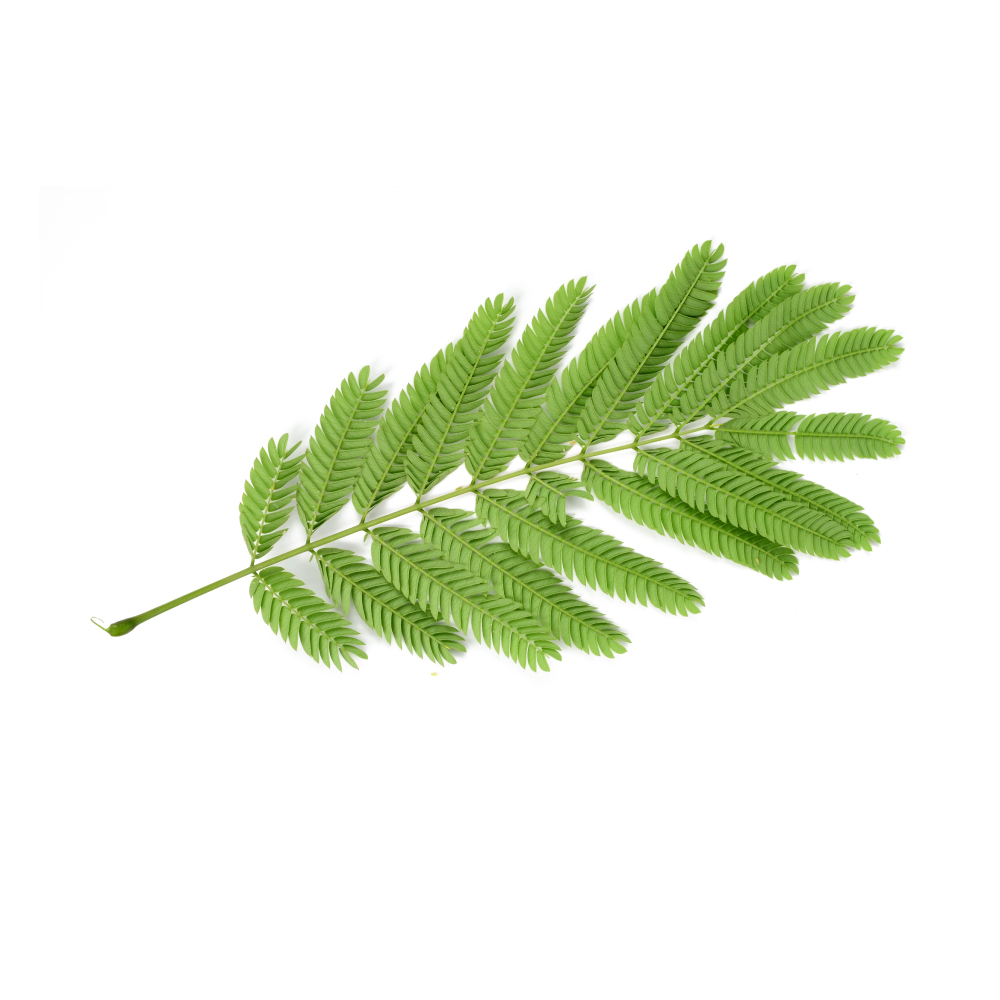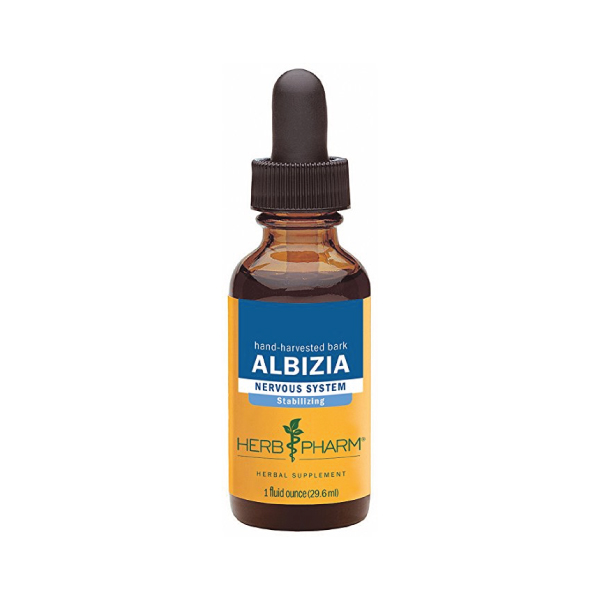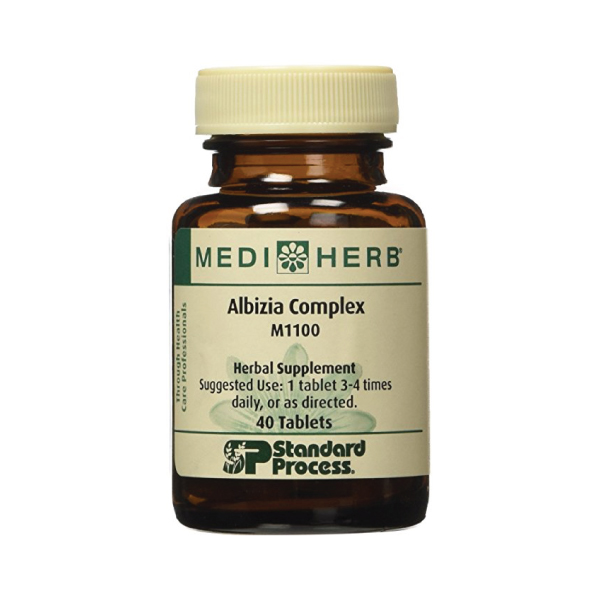What is Albizzia?
Albizzia is a great herb for seasonal allergies and upper respiratory tract infections.
The mechanism of action is on the mast cells directly, thus inhibiting the histamine release responsible for the symptoms of allergies. In order for this to be most effective, albizzia must be taken prior to exposure to the allergen.
Further uses of albizzia is towards diabetes through its protective effect on the islet of langerhans in the pancreas. These are the cells responsible for secreting insulin to the body.
+ Indications
- Allergic asthma
- Allergic Rhinitis
- Diabetes
- Eczema
- Hypercholesterolemia
- Male Infertility
+ Mechanisms
Still compiling
+ Safety
None reported [1]
Due to the anti-spermatogenic activity of Albizia [9], avoid use if trying to conceive.
What Is Albizzia Used For?
Albizzia is used as a herbal antihistamine and mild sedative. It’s primarily used in Western herbal medicine for coughs, asthma, and seasonal allergies.
Traditional Uses of Albizzia
+ Ayurveda
In the Ayurvedic medical system, albizia bark and flowers were used (and still are) to treat conditions such as bronchitis, asthma, allergic disorders, leprosy, eczema, pruritus, paralysis, inflammation of the gums, inflammatory conditions, arthritis, and infection of parasitic worms [1, 11].
+ Traditional Chinese Medicine
Pinyin:
He Huan Pi
Taste:
Sweet [15]
Energy:
Neutral [15]
Channels:
Heart and Liver [15]
Action:
Releives depression, tranquilizes the mind, promotes blood circulation to induce swelling [15].
Indications:
Depression, restlessness due to defficiency, poor memory, insomnia [15].
Combinations:
Bai Zi ren (For depression) [15]. Dang gui, Chuan Xiong (For fractures) [15]. Pu Gong Ying, Ye Ju Hua (For carbuncles) [15].
Dose:
10-15g decocted in water orally [15].
Herb Details: Albizzia
Herbal Actions:
- Antiallergic
- Antihistamine
- Hypocholesterolemic
- Antinflammatory
- Antitussive
- Antioxidant
- Anti-spermatogenic
- Antidiabetic
Weekly Dose
- (1:2 Liquid Extract)
25-60 mL - View Dosage Chart
Part Used
- Inner Bark
Family Name
- Leguminoseae
Distribution
- Albizia can be found throughout India, from the Himalayas to the Andmans [2].
Constituents of Interest
- Melanoxetin
- Lebbecacidin
- macrocylic alkaloids
Common Names
- Albizia
- Albizzia
- Sharisha (Sanskrit)
CYP450
- Unknown
Pregnancy
- Unknown
Duration of Use
- Suitable for long term use.
Products Containing Albizzia
Botanical Information
Albizzia trees can be found the world over. It is contained in the Leguminosae family, which accounts for all the legumes including soy and peas. Nearly every continent except Antarctica has its own species of Albizzia.
Phytochemistry:
+ Summary Of Constituents
Heartwood:
- Melanoxetin
- d-pinitol
- Melacacidin
- Lebbecacidin
- Saponins
- Macrocylic alkaloids
- Phenolic glycosides
- Flavonols
Pharmacology & Medical Research
+ Allergies
A lot of research on albizia's anti-allergic effects were conducted in the '70s and '80s which discovered that albizia was able to inhibit many of the early processes of sensitization. More specifically, albizia was reported to decrease the amount of T-cell, and B-cell activity. It's also discovered to have a stabilizing effect on the mast cells. [1].
Albizzia has been shown to reduce asthma symptoms in 94% of patients in a single-blinded study [5]. These effects were thought to be due to albizzias ability to stabilize mast cells and prevent degranulation and subsequent release of histamine and leukotrienes. This has been proven to be possible through in vitro research [12].
+ Diabetes
Another species of Albizia, Albizia odoratissima was shown to possess anti-diabetic actions in alloxan-induced diabetic mice [14]. Due to the confirmed hypoglycemic activity of Albizia lebbeck as well [13], it is likely that both of these species possess similar actions towards diabetes.
In a different study, Albizia lebbeck was investigated for its anti-diabetic activity. The study found that Albizia lebbeck was able to protect the pancreatic islet of Langerhans cells from oxidative damage [10]. This suggests a protective effect against diabetes mellitus due to fatty deposits and destruction in the pancreas.
Clinical Applications Of Albizia:
The stem bark of albizzia is used as a strong decoction or liquid extract to treat a wide range of respiratory-related conditions. The most effective use of albizzia towards allergies is achieved by treating before exposure to the allergen.
Recent Blog Posts:
References
Bone, K. (2003). A clinical guide to blending liquid herbs: Herbal formulations for the individual patient. Edinburgh, Churchill Livingstone. (Pg. 59-60).
Yadav S.S, Galib, Prajpati P.K, Harisha C.R. (2011). Pharmacognostical Screening and Phytochemical Evaluation of Albizia lebbeck Benth. Heartwood. Asian Journal of Biomedical and Pharmaceutical Sciences. 1(5). 1-6.
Paramanic KC, Bhattacharya P, Chatterjee TK and Mandal SC. (2005). Anti-inflammatory activities of methanol extract of Albizia lebbeck bark. European Bull Drug Reser. 13:71-74.
Tripathi RM, Sen PC, Das PK, (1979). Studies on the mechanism of action of Albizzia lebbeck, an Indian indigenous drug used in the treatment of atopic allergy. J Ethnopharmacol. 1(4):385-396.
Kumar S, Bansal P, Gupta V, S and R, Rao MM., (2010). Clinical efficacy of Albizia lebbeck stem bark decoction on Bronchial asthma, International Journal of Pharmaceutical Science and Drug Research. 2(1):48-50.
Shyamlal Singh Yadav, Galib, Prajapati PK, Ravishankar B, Ashok BK. (2010). Evaluation of Anti-tussive activity of Shirishavaleha –An Ayurvedic Herbal Compound Formulation in Sulphur Dioxide induced Cough in mice, Indian Drugs, 47(9):38-41
Resmi CR., (2006). Antioxidant activity of albizia lebbeck in alloxan diabetic rats. Indian J Physiol Pharmacol. 50(3): 297-302
Kasture VS, Pal SC, (1996). Anticonvulsant activity of Albizzia lebbeck leaves, Indian journal of Experimental 34(1):78-80.
Gupta RS, Kachhawa JB and Chaudhary R., (2004). Antifertility effects of methanolic pod extract of Albizia lebbeck Benth. in male rats. Asian J. Androl. 6(2): 155-159.
Ahmed, D., Kumar, V., Verma, A., Gupta, P. S., Kumar, H., Dhingra, V., Sharma, M. (2014). Antidiabetic, renal/hepatic/pancreas/cardiac protective and antioxidant potential of methanol/dichloromethane extract of Albizzia Lebbeck Benth. stem bark (ALEx) on streptozotocin induced diabetic rats. BMC Complementary and Alternative Medicine,14(1), 243. doi:10.1186/1472-6882-14-243
Mudaliar KSM. (1936). Siddha Materia Medica. Chennai: Department of Indian Medicine and Homeopathy; 799–800.
Tripathi SN, Shukla P. (1979). Effect of histamine and Albizzia lebbek Benth. on guinea pig adrenal glands. Indian J Exp Biol. 17:915–917.
Kumar D, Dash GK, Tripathy NK. (2013). Hypoglycaemic activity of bark extracts of Albizia lebbeck Benth. in streptozotocin induced diabetic rats. Int J Pharm Sci Rev Res. 18(2):28–32.
Kumar D, Kumar S, Kohli S, Arya R, Gupta J. (2011). Antidiabetic activity of methanolic bark extract of Albizia odoratissima Benth. in alloxan induced diabetic albino mice. Asian Pac J Trop Med. 4:900–903.
Wu, J. N. (2005). An illustrated Chinese materia medica. New York: Oxford University Press. (Pg. 56-57).













As COVID-19 continues to spread around the world, we’re getting a lot of questions on what the potential role of herbal medicine is during the outbreak. Learn how the virus works and how to limit your chances of transmission.